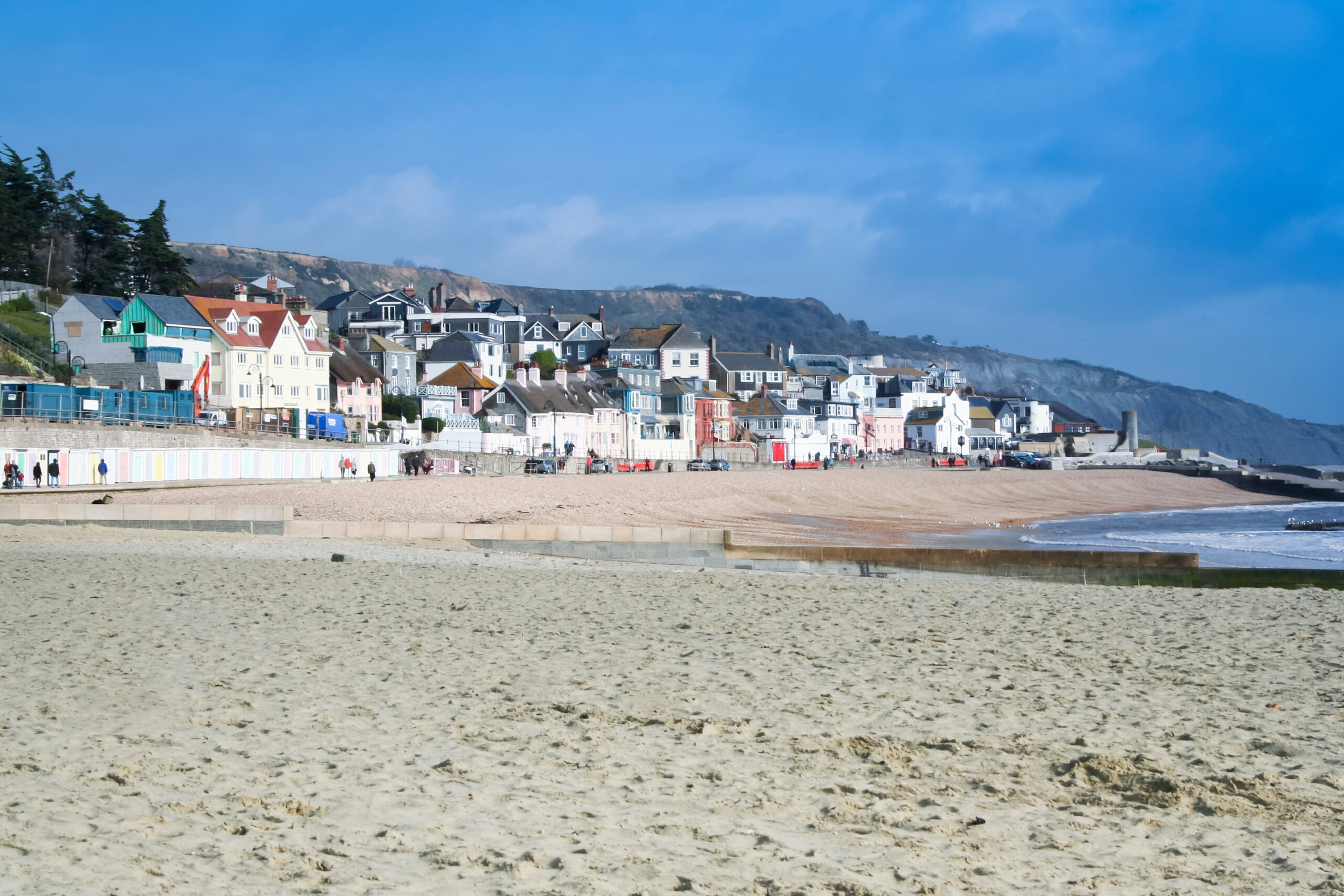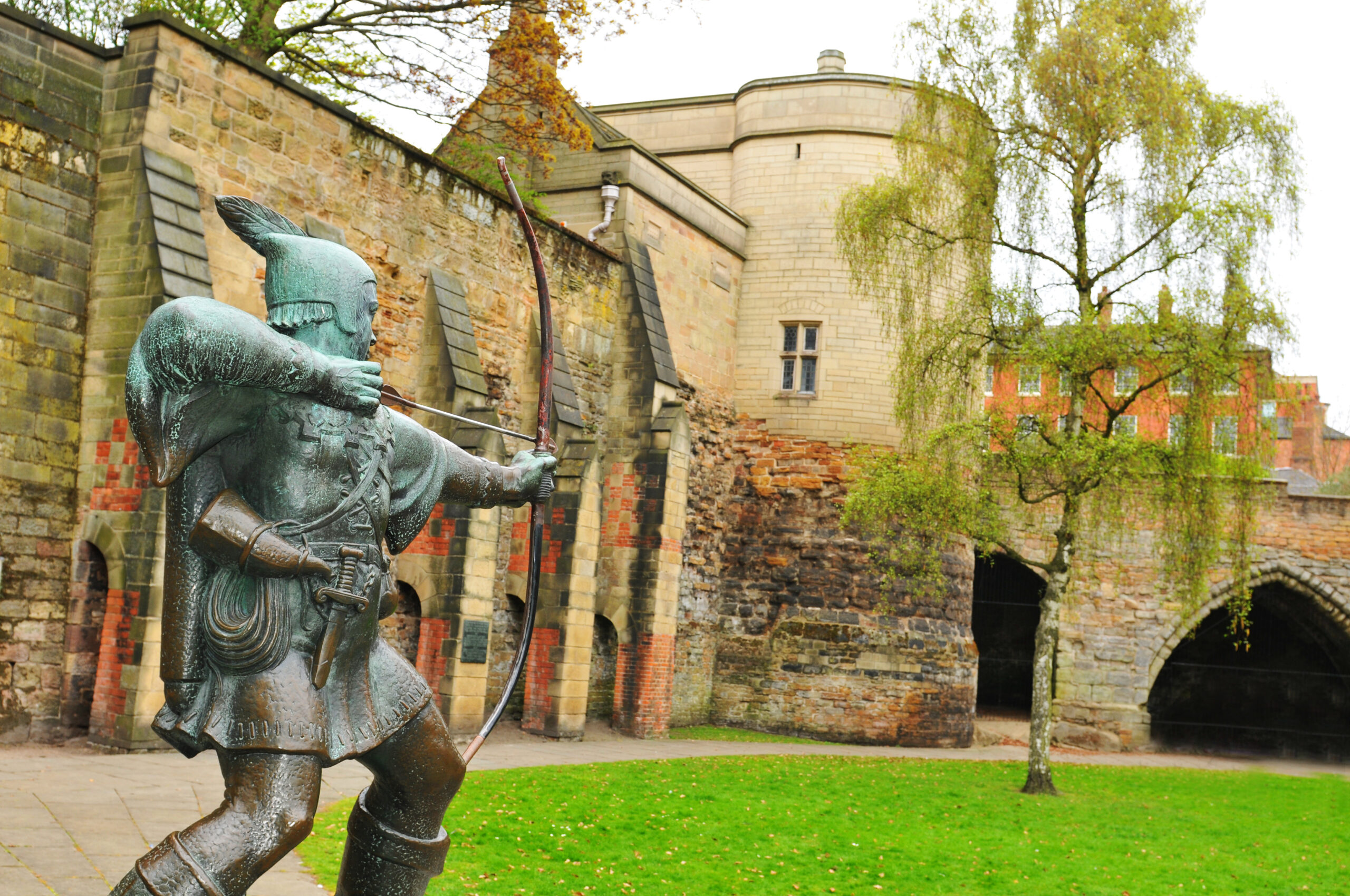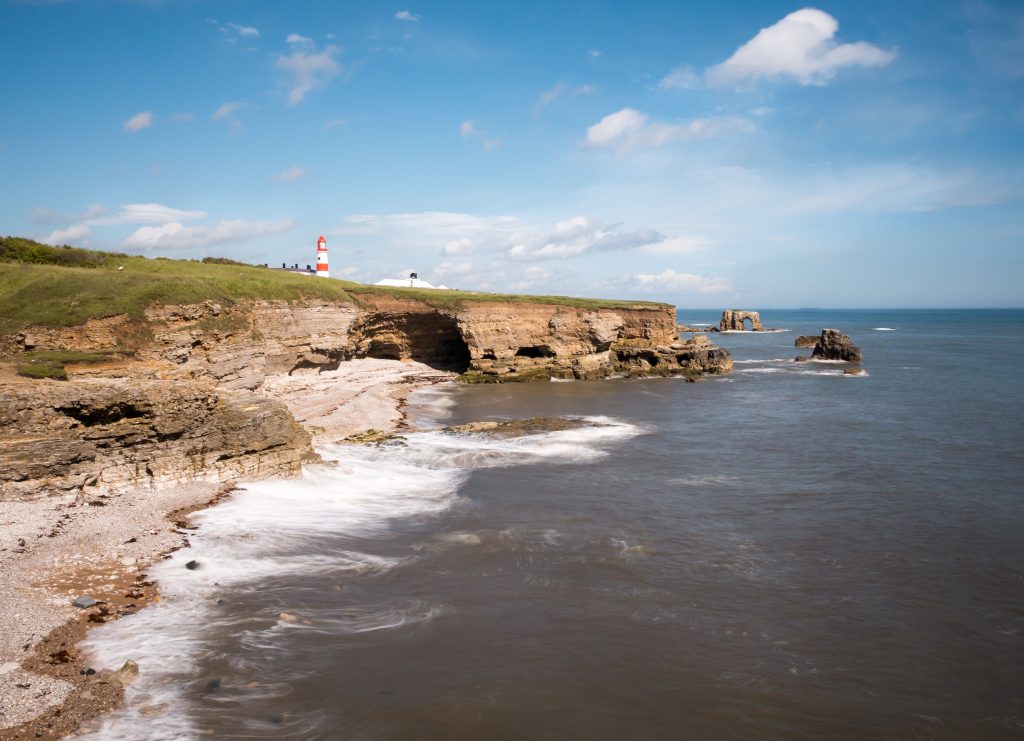

It’s easy with the E1 for seaside scenery and Sunderland serenading!

It’s a cracker of a journey, and there really is something wonderfully effortless about jumping on Stagecoach’s E1 bus from South Shields to Sunderland, a trip of seaside japery and scenic thrills and spills. This service from super Stagecoach, this route hugs the northeast coastline, offering a relaxed, fun-packed ride straddling sandy beaches, seaside parks, and the vast, ever-changing North Sea, all the way to bright lights of Sunderland! Two proud communities cojoined by coast and in under an hour! What’s not to like?

South Shields itself is a top place to start a day out. It’s a town with a brilliant sense of identity and history, shaped by shipbuilding, mining, and the sea. Fascinating features that epitomise the character of this fab town, include the South Shields Groyne Pier and its iconic Herd Groyne Lighthouse which form a distinctive maritime landmark at the mouth of the River Tyne. The Lighthouse is a 13-metre-tall, hexagonal structure built in 1882. Its unique design, featuring a red-painted wooden and corrugated iron exterior supported by twelve steel legs, gives it a distinctive appearance reminiscent of a 1940s sci-fi spacecraft . The lighthouse remains operational, guiding vessels safely into the Tyne with its sector light that changes colour—white, red, or green—depending on the ship’s position.
Constructed between 1861 and 1867, the Groyne pier was designed to protect Littlehaven Beach—formerly known as Herd Sands—from erosion caused by shifting currents following the development of the nearby piers.

Architectural ingenuity goes well beyond the beautiful beach in South Shields and includes the many elegant buildings – our favourite is the majestic Town Hall which was constructed between 1905 and 1910 and is a fine example of Edwardian Baroque brilliance! Meanwhile, culture thrives at The Customs House, a Grade II Italianate building turned arts centre with theatres, galleries, and live events. Nearby South Shields Museum & Gallery explores local wildlife and history. For literary lovers, The Word, the National Centre for the Written Word, offers exhibitions, workshops, and blissful sea views.

If you’ve got a bit of time before hopping on the E1 bus, take a stroll along the promenade or pop into Ocean Beach Pleasure Park in the summer months. There’s a proper, classic mix of traditional amusements, arcades, and fairground rides here, all right on the seafront. And for something more serene, South Marine Park – just opposite the beach – offers a peaceful wander with a miniature steam train and a lake you can boat across when the weather’s right.
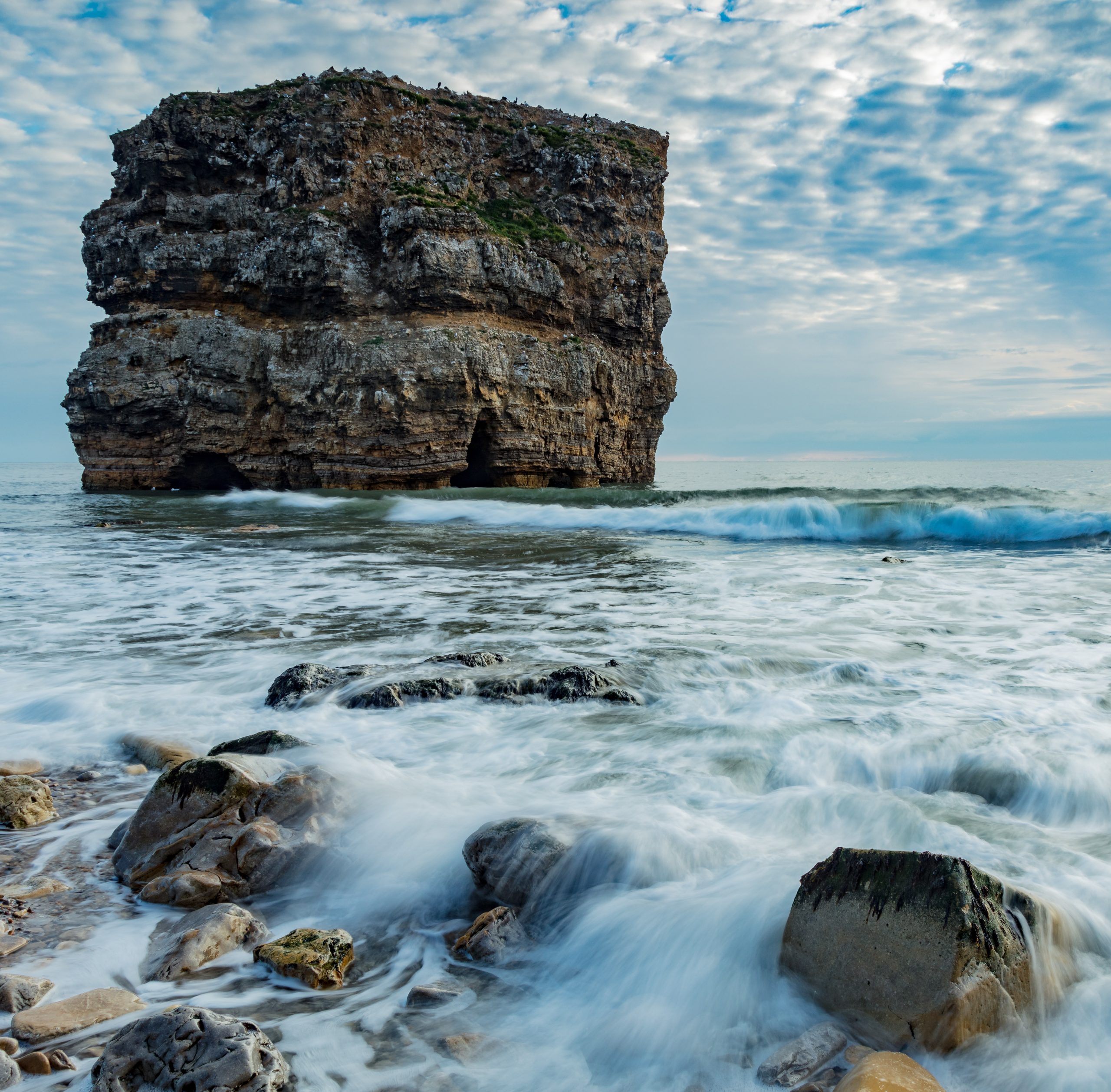
As the E1 leaves South Shields and makes its way through Marsden, you get a real taste of this part of the northeast – dramatically so! Marsden Bay is a particular highlight – even from the bus, the rugged cliffs and wide open views are hard to miss. At its heart stands the iconic sea stack—a towering pillar of magnesian limestone rising approximately 90–100 feet (27–30 m) from the sea, positioned about 300 feet offshore. Once part of the mainland cliff, Marsden Rock became separated following centuries of erosion, with a natural arch collapsing first in 1911, then fully in 1996—leaving the current majestic stack alongside a smaller pillar dismantled in 1997 for safety. If you ever fancy breaking up your scenic sojourn on the E1, Marsden Grotto – a pub built into the cliffs – is one of the area’s quirkiest spots. There’s even a lift down to the beach if the tide and weather play ball.

Whitburn and Seaburn come next on this eclectic journey of coastal capers and frivolity, and you’ll start to feel the shift towards Sunderland. These quieter seaside areas have long stretches of promenade and beach, ideal for dog walkers, joggers, or anyone who just fancies a languid stroll and sumptuous sea air. Whitburn, in particular, offers sweeping views over the North Sea and the surrounding countryside. The village’s history stretches back to prehistoric times, with Mesolithic flint tools and a Bronze Age burial cist discovered in the area. Whitburn is first recorded in the Boldon Book of 1183 as “Whitberne,” likely referencing a local stream. During the medieval period, it developed as a two-row green village, a layout still evident today. During World War II, Whitburn played a role in coastal defense, with installations such as an anti-aircraft battery and a decoy site designed to mislead enemy bombers. The village also suffered damage from bombing raids, leading to the loss of historical structures like the tithe barn.

Roker Pier and Lighthouse mark the gateway to Sunderland proper and are well worth a visit in their own right – especially around sunset. The walk along Roker Beach is one of the northeast’s hidden gems, and the area’s seen a lot of investment in recent years, with smart cafes and places to sit with a coffee or an ice cream.

Once you reach Sunderland, you’ll find a resurgent city that’s both down-to-earth and surprisingly full of things to do. The seafront might be the draw for many visitors, but the city centre – a short walk or bus hop from the final stop – is worth exploring too. The Sunderland Museum and Winter Gardens in Mowbray Park is a good all-rounder, with exhibitions covering everything from local history and shipbuilding to natural sciences and art. The glasshouse at the back – filled with exotic plants – is particularly popular on colder days.

Super Sunderland’s cultural heart has grown steadily in recent years. The Fire Station is now a top spot for live music, theatre, and events, while the nearby Northern Gallery for Contemporary Art brings a steady stream of fresh exhibitions. If you’re into football, Stadium of Light looms large just across the River Wear – a must-see for fans and a real landmark in the city – the home of Sunderland Football Club who recently made it into the Premier League for the coming season, having defied the odds in the Play-Offs with victories over Coventry City and at Wembley against Sheffield United! This really is the time to serenade Sunderland, who only 3 years ago were in League 1!

Food and drink in Sunderland are all about comfort and quality. Whether it’s proper fish and chips from Downey’s on the seafront or something a bit fancier at Six Pier Point, there’s something to suit every budget. Coffee shops like Fausto and Love Lily are also local favourites, offering a warm welcome and a decent brew.
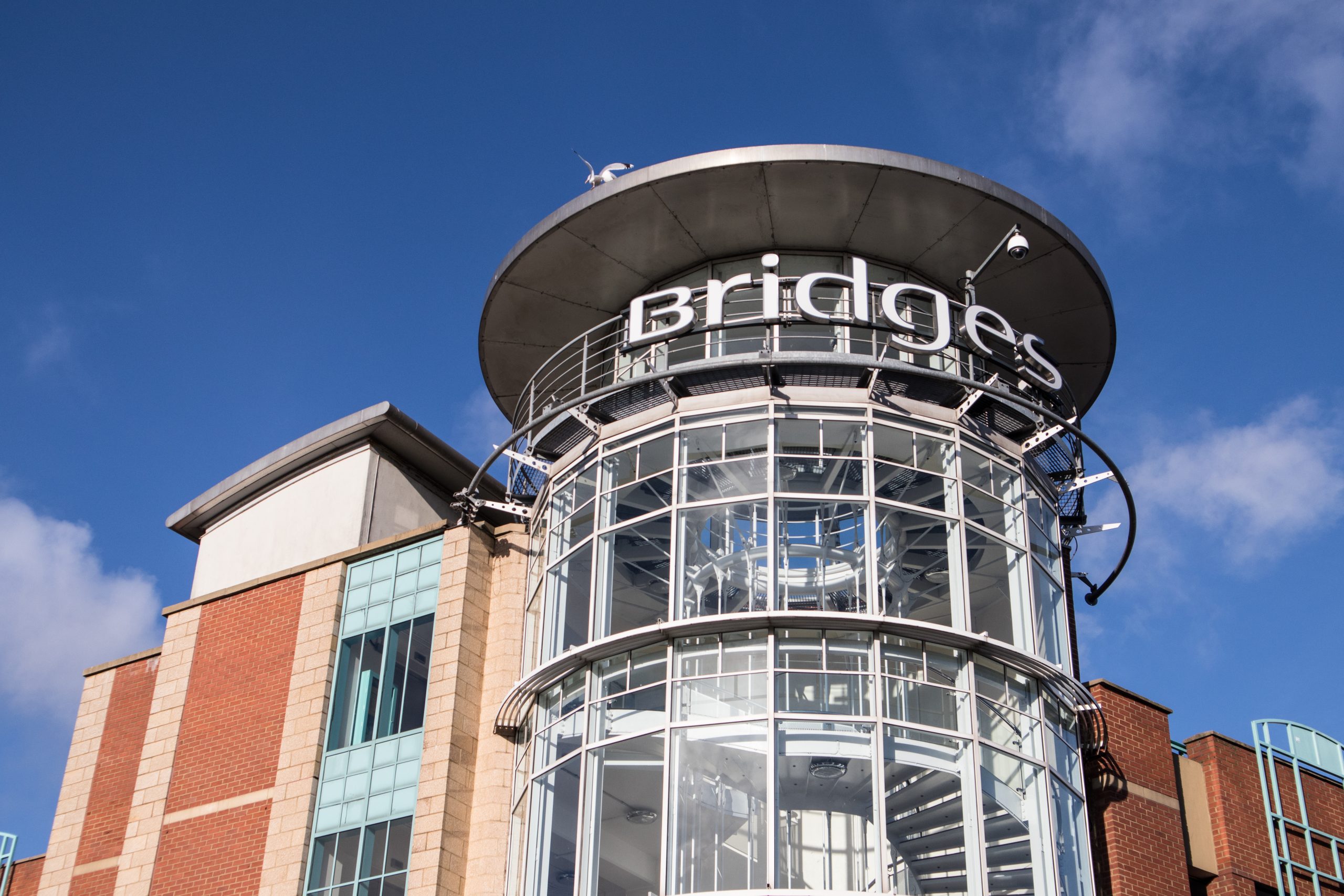
For shoppers, The Bridges Shopping Centre has all the big names you’d expect, but there are also independent shops scattered through the city if you look a bit closer. Sunderland’s retail scene might not be flashy, but it’s practical and well-served – ideal for a bit of browsing before heading home on the E1 bus.

Nature lovers might fancy a stopover in Sunderland and perhaps push on a bit further to Herrington Country Park or Penshaw Monument. The 2, 2A and 78 bus from Sunderland Interchange whisks folk to these fantastic places. These lovely open green spaces offer brilliant walking routes, views across the region, and plenty of fresh air to blow the cobwebs away!
What ties all these great locations together, though, is how easy it is to get around. The E1 makes coastal travel straightforward, frequent, and affordable, as part of a bigger network of bus routes n the North East, many of them also scenic showpieces! The bus services link invigorating communities along the coast, all seeped in rich heritage and folklore, and give locals and visitors alike real freedom to explore without a car. And the views out the window? Worth the £2 fare on their own!
So whether you’re planning a beach day, a shopping trip, or just a ride with a view, the E1 from South Shields to Sunderland is a great option. You get the feel of two proud towns, a stretch of stunning coastline, and all the flexibility that comes with regular, reliable service. Next time you’re by the sea and fancy a change of scene – just hop on.
To plan this masterpiece of a scenic journey, check out our link below…

